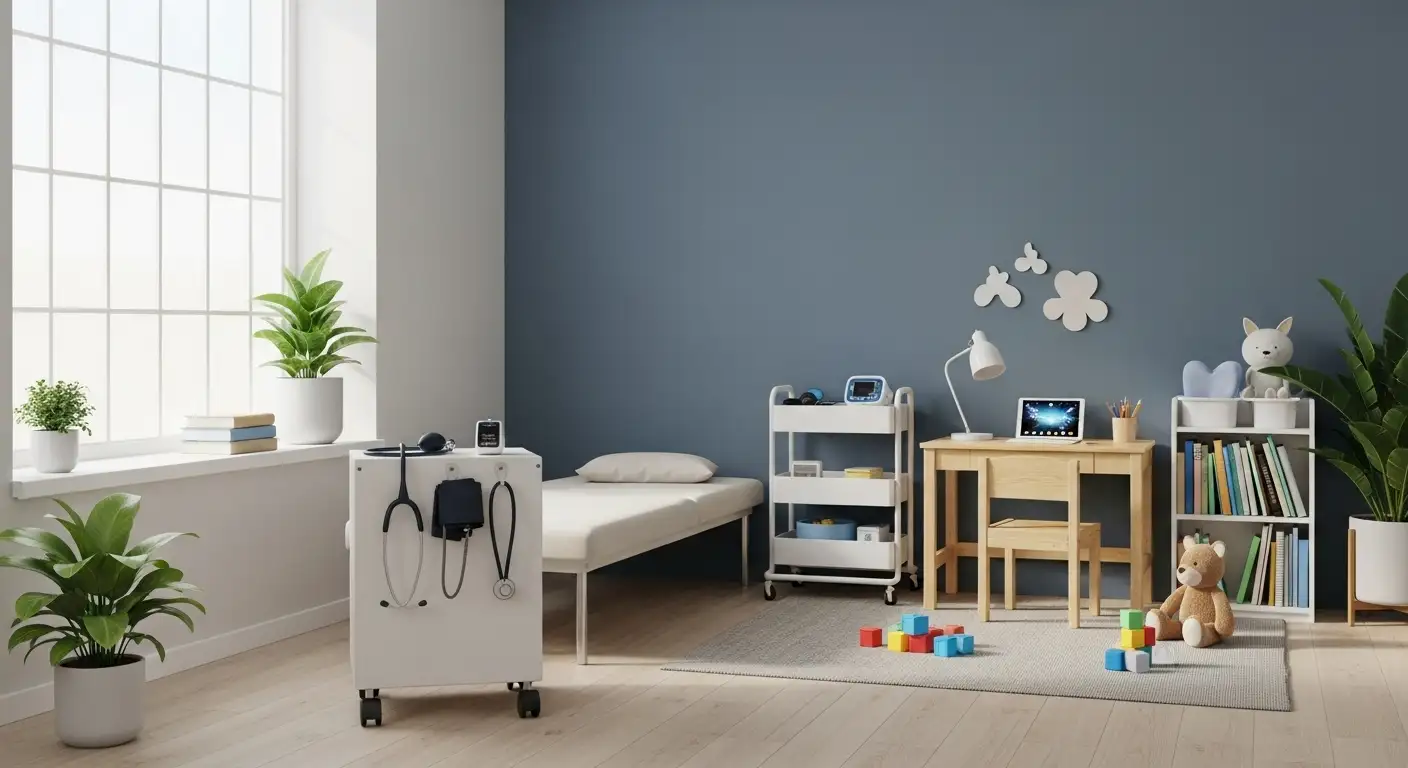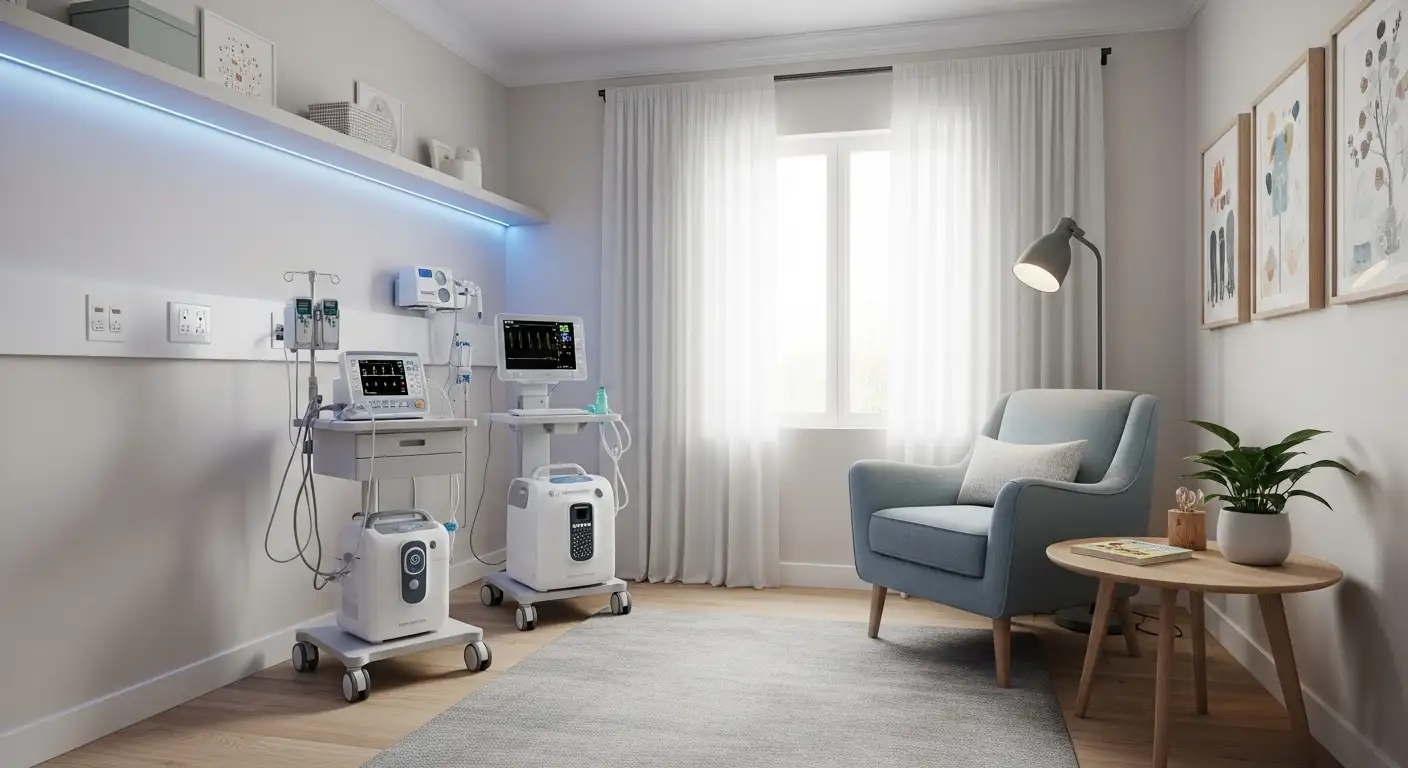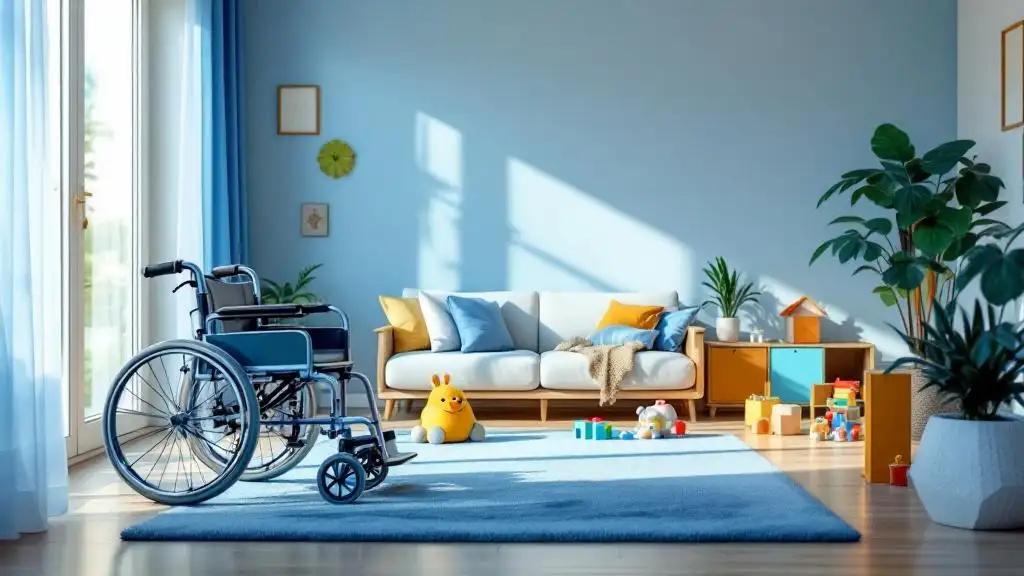Music and Art Therapy at Home
Transform lives with music and art therapy at home. Discover the power of personalized sessions and therapeutic techniques.

Benefits of Music Therapy
Music therapy is a powerful form of therapy that can have a profound impact on individuals' emotional well-being and cognitive abilities. It offers a range of benefits, from emotional and social improvements to cognitive retraining and behavioral changes.

Emotional and Social Improvements
One of the significant benefits of music therapy is its ability to improve emotional behavior, growth, social skills, and motor control, thereby lessening anxiety. Music has a unique way of evoking emotions and creating a sense of connection. Through music therapy, individuals can express their emotions, find solace, and develop a deeper understanding of their feelings.
Music therapy can help individuals reduce physical discomfort and stress caused by mental health issues, setting it apart from other types of therapies. It provides a safe and non-threatening space for individuals to explore and process their emotions, leading to improved emotional well-being and a sense of empowerment.
Furthermore, music therapy promotes social interaction and communication skills. Group music therapy sessions allow individuals to engage with others, fostering a sense of community and belonging. It can be particularly beneficial for individuals with autism spectrum disorder or other social communication difficulties, helping them develop social connections and improve their ability to relate to others.
Cognitive Retraining and Behavioral Changes
Music therapy goes beyond traditional therapies by retraining certain cognitive abilities and promoting behavioral changes. It has the unique ability to help change the brain, leading to improvements in cognitive functioning [1]. Music engages multiple areas of the brain, stimulating cognitive processes such as memory, attention, and problem-solving.
Research has shown that music therapy can positively impact mood and reduce anxious or depressive symptoms in both children and adults. It has been found to improve mental health in children and adolescents, enhance communication in children with autism spectrum disorder, and be an effective intervention for adults with mental health problems worldwide.
By incorporating music therapy into treatment plans, individuals can experience improvements in cognitive abilities, such as memory and attention. Music therapy techniques can also help individuals develop coping strategies and acquire new skills to manage their emotions and behavior effectively.
Overall, music therapy offers a wide range of emotional, social, cognitive, and behavioral benefits. Its impact extends beyond traditional therapeutic approaches, making it a valuable tool in various settings, including hospitals, educational institutions, and clinical settings. By harnessing the power of music, individuals can nurture their souls and transform their lives.
Personalized Music Therapy Services
Incadence offers personalized music therapy services that are tailored to meet the individual needs of each participant. These sessions are conducted by board-certified music therapists who integrate the individual's needs, beliefs, values, and priorities into each session. The personalized approach ensures that the therapy is effective and impactful, addressing the specific goals and challenges of each individual.
Tailored Sessions for Individual Needs
One of the key advantages of Incadence's music therapy services is the customization of sessions to cater to individual needs. The board-certified music therapists work closely with each participant to understand their unique requirements and design therapy sessions accordingly. Whether it is managing stress, improving emotional behavior, enhancing social skills, or addressing physical discomfort, the therapy sessions are tailored to target specific areas of improvement.
Through the use of various musical techniques and interventions, the music therapy sessions aim to provide a safe and supportive environment for individuals to explore their emotions, express themselves, and facilitate personal growth. The personalized approach allows for the development of a strong therapeutic relationship between the participant and the music therapist, fostering trust and promoting effective outcomes.
Inclusive Accessibility of Music Therapy
Incadence believes in making music therapy accessible to everyone who needs it. No musical skill or ability is necessary to participate in the therapy sessions, ensuring that individuals of all backgrounds and abilities can benefit from the therapeutic power of music.
The inclusive nature of Incadence's music therapy services allows individuals to engage in therapy regardless of their musical background or experience. This accessibility enables a broader range of individuals to benefit from the positive impact of music therapy, promoting emotional well-being, personal development, and overall improvement in quality of life.
By offering tailored sessions and ensuring inclusive accessibility, Incadence's music therapy services aim to transform lives through the healing power of music. The personalized approach and inclusive nature of these services allow individuals to receive the support they need while fostering a sense of empowerment, self-expression, and growth.
Exploring Art Therapy
Art therapy is a therapeutic modality that utilizes artistic methods to improve an individual's mental, physical, and emotional well-being. The history of art therapy can be traced back to the 1940s when it was first documented as a tool for promoting healing. The purpose of art therapy is to provide a safe and non-judgmental space for individuals to explore their feelings, express themselves, and engage in self-discovery and healing.
History and Purpose of Art Therapy
Art therapy emerged as a therapeutic approach that recognized the power of art in promoting self-expression, healing, and personal growth. It involves the use of various artistic techniques to assist individuals in exploring their thoughts, emotions, and experiences. Art therapists employ a range of materials, such as paints, clay, and collage, to facilitate the art-making process and encourage self-reflection.
The main purpose of art therapy is to enhance an individual's functioning and overall quality of life. It goes beyond creating a masterpiece; instead, it focuses on the process of self-discovery and healing. Art therapy provides a means for individuals to express and communicate their emotions, thoughts, and experiences that may otherwise be challenging to articulate verbally. Through art-making, individuals can gain insights, develop coping skills, and foster personal growth.
Therapeutic Techniques and Benefits
Art therapy employs a variety of therapeutic techniques to address different needs and goals. These techniques aim to facilitate creative problem-solving, explore the relationship between feelings and behavior, promote self-reflection, enhance emotional understanding, and foster healthier ways of relating to oneself and others [4]. Some common techniques used in art therapy include:
- Free drawing/painting: Allowing individuals to freely express themselves through drawing or painting without any specific guidelines or expectations.
- Collage: Using images and materials to create collages that represent feelings, experiences, or narratives.
- Sculpting: Working with clay or other materials to create three-dimensional forms that can symbolize emotions or experiences.
- Guided imagery: Using visual prompts or guided visualization to explore and express inner thoughts and feelings.
- Mask-making: Creating masks that represent different aspects of oneself or explore hidden emotions.
Art therapy has proven to be effective in treating a wide range of mental health symptoms and psychological disorders. It is used in the treatment of conditions such as ADHD, OCD, schizophrenia, trauma, grief, anxiety, PTSD, and depression. Art therapy can benefit individuals of all ages and artistic abilities, as it provides a creative and therapeutic outlet for self-expression and healing.
By incorporating art therapy into their lives, individuals can tap into their creative potential, gain insights into their emotions, and develop new ways of coping with life's challenges. The process of engaging in art therapy can be transformative, empowering individuals to nurture their soul and enhance their overall well-being.
Art Therapy for Mental Health
Art therapy is a powerful tool for promoting mental health and well-being. Through creative problem-solving and emotional expression, art therapy can help individuals explore their feelings, develop self-reflection skills, and navigate challenges in their lives.
Creative Problem-Solving
Art therapy techniques focus on creative problem-solving, providing a safe and non-judgmental space for individuals to explore the relationship between their feelings and behavior. It encourages the exploration of emotions and the development of healthier ways of relating to oneself and others. By engaging in the creative process, individuals can gain new perspectives, find solutions to challenges, and discover alternative ways of thinking and problem-solving.
Through art therapy, individuals are encouraged to express their thoughts and emotions visually, allowing for a deeper understanding of their inner world. This process can help individuals gain insight into their feelings and explore different aspects of their identity. By tapping into their creativity, individuals can find unique and innovative ways to approach problems and overcome obstacles.
Emotional Expression and Self-Reflection
Art therapy provides a platform for emotional expression, allowing individuals to communicate their emotions and experiences in a non-verbal manner. Through the use of various art materials and techniques, individuals can externalize their emotions and create tangible representations of their inner experiences.
Engaging in art-making can be a cathartic process, enabling individuals to release and process difficult emotions. It offers a safe outlet for expressing and exploring complex feelings, such as grief, trauma, anxiety, and depression. The act of creating art can promote self-awareness and personal growth, enabling individuals to gain a deeper understanding of their emotions and experiences.
Self-reflection is an integral part of art therapy, as individuals are encouraged to explore their artwork and reflect on the thoughts and emotions it evokes. Through this process, individuals can gain insights into their own patterns of thinking, behavior, and emotional responses. Art therapy provides a means for individuals to develop self-compassion, increase self-esteem, and foster personal growth.
Art therapy has been found to be effective in treating a wide range of mental health symptoms and psychological disorders, including ADHD, OCD, schizophrenia, trauma, grief, anxiety, PTSD, and depression. It offers a unique and personalized approach to therapy that can be beneficial for people of all ages and artistic abilities.
By incorporating art therapy into their lives, individuals can tap into their creativity, explore their emotions, and gain valuable insights that contribute to their overall mental well-being.
Music Therapy Tools and Techniques
Within the realm of music therapy, various tools and techniques are employed to facilitate healing, self-expression, and personal growth. Two prominent techniques are drumming and singing, each offering unique benefits and opportunities for individuals engaging in music therapy.
Drumming and Group Therapy
Drumming serves as an effective music therapy technique that promotes fun, positive engagement, and social connection. It involves rhythmic patterns produced by individuals or groups using drums, percussion instruments, or even everyday objects. The act of drumming increases cellular activity, helping the body combat neurological and endocrinological disorders.
Group drumming sessions create a sense of unity and teamwork, fostering feelings of belonging and community. The synchronized rhythm and shared experience can strengthen interpersonal connections and enhance communication skills. Additionally, drumming has been shown to improve motor skills, coordination, and cognitive function.
Singing and Brain Stimulation
Singing, a universal music therapy technique, is suitable for clients of all ages and backgrounds. It holds tremendous potential for emotional expression, cognitive stimulation, and overall well-being. Singing helps repair damaged brain tissues and is particularly valuable in treating conditions such as Parkinson's disease, dementia, and Alzheimer's.
Engaging in singing exercises stimulates various regions of the brain, including those responsible for memory, language processing, and emotional regulation. This stimulation can help improve cognitive function, boost mood, and enhance overall mental well-being. Singing has also been shown to reduce stress responses in the cardiovascular and endocrine systems, contributing to a sense of physical and psychological balance.
Both drumming and singing interventions, whether led by therapists or non-therapists, have demonstrated visible improvements in mental health for individuals diagnosed with anxiety, depression, and schizophrenia. These interventions have also shown benefits such as improved heart rate, motor skills, brain stimulation, and enhancement of the immune system.
By incorporating drumming and singing into music therapy sessions, individuals can tap into the transformative power of music. These techniques provide avenues for self-expression, emotional release, and social connection, ultimately nurturing the soul and promoting holistic well-being.
Incorporating Technology in Therapy
In recent years, technology has played a significant role in the advancement of therapy practices, including music and art therapy. Incorporating digital tools and online platforms has opened up new avenues for therapeutic interventions, making therapy more accessible and enhancing the therapeutic experience. This section explores the incorporation of technology in therapy, specifically focusing on digital art therapy advancements and online art therapy considerations.
Digital Art Therapy Advancements
Art therapists have embraced digital technology as an innovative tool in art therapy sessions. The use of digital arts media empowers clients by providing expressive qualities that may not be achievable with traditional physical art materials. It has been observed that digital art making reduces inhibitions, promotes freedom of expression, and facilitates multimodal expression not limited to images.
Furthermore, digital art therapy allows for the recording and preservation of the stages of artwork development. This feature can be particularly beneficial for clients who are resistant to touching traditional art materials or those with tactile sensitivities. The therapeutic potential of digital arts media lies in the freedom of expression it offers, the empowering nature of the digital environment, and the ability to capture the progress of the artwork.
Online Art Therapy Considerations
The rise of online therapy has made art therapy more accessible to individuals regardless of geographical location or barriers such as stigma or disability. Online art therapy has been recognized for bridging geographical divides and expanding access to therapy services, particularly for clients in rural or remote areas. The online mode of delivery has also been found to promote community involvement, integration, and social engagement.
However, it is important to consider certain considerations and challenges when conducting art therapy online. Art therapists have expressed concerns about maintaining privacy and confidentiality during online sessions. Interruptions from family members or housemates could potentially compromise the privacy of the therapeutic space. Establishing a safe emotional container in a cyberspace can be more challenging compared to face-to-face therapy sessions.
Despite the challenges, online art therapy has proven to be a valuable modality, expanding access to therapy services and fostering therapeutic engagement. It offers convenience, flexibility, and the opportunity to connect with therapists and fellow clients from different locations. By leveraging technology, art therapists can provide effective and meaningful therapy experiences to individuals in the comfort of their own homes.
Incorporating technology in therapy, whether through digital art therapy advancements or online art therapy, opens up new possibilities for therapeutic interventions. It enables individuals to engage in creative expression, experience emotional growth, and connect with others in transformative ways. As technology continues to evolve, so too will the potential for enriching and expanding the field of music and art therapy.
























































































.avif)



